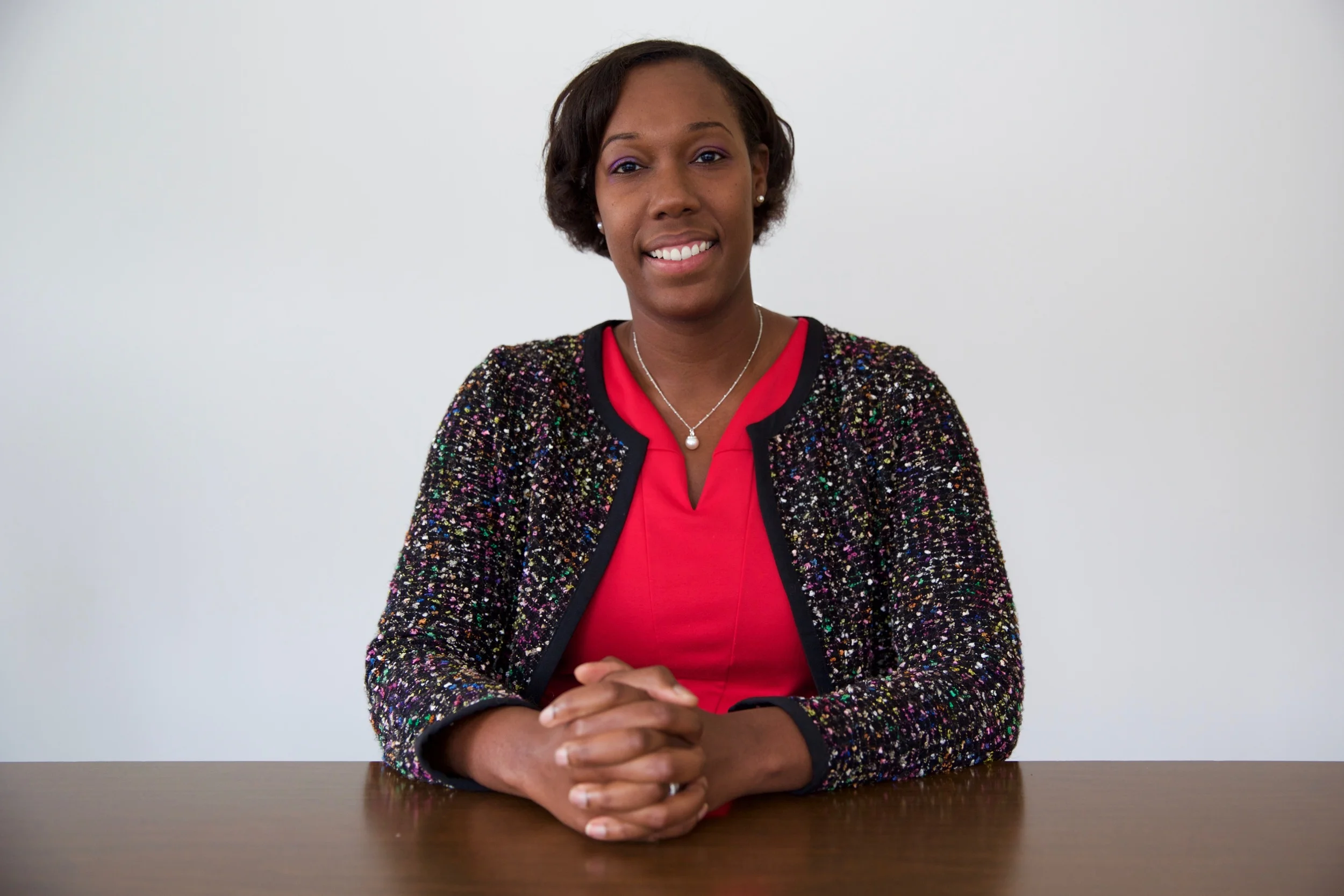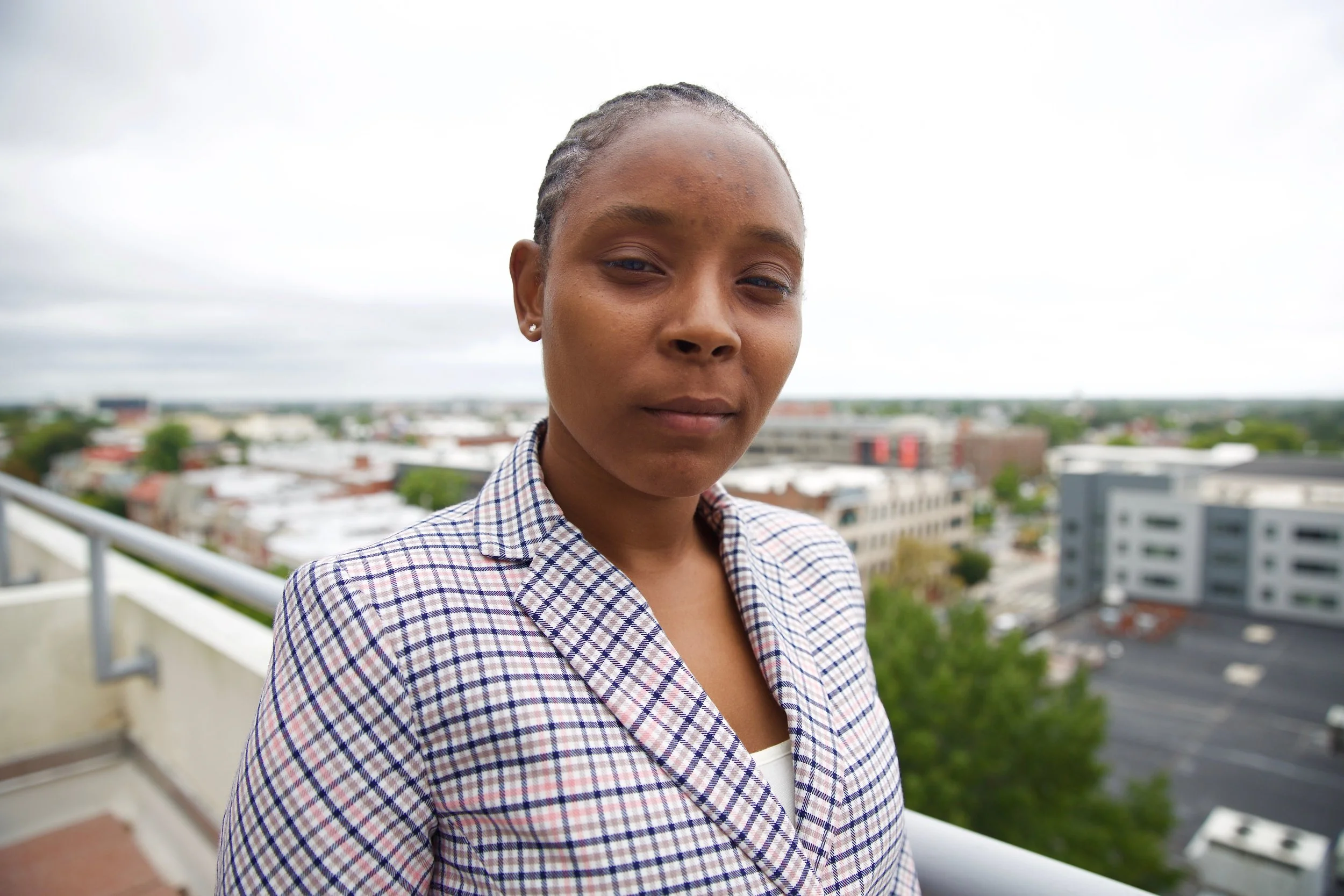Richmond Justice
STORIES + PORTRAITS
Jeree | January 1, 2016
Jeree Thomas is an attorney with the JustChildren program of the Legal Aid Justice Center. She represents incarcerated youth on issues involving their education, treatment, and modifications to their sentences.
[Editors' note: On July 12, 2016, Jeree became Policy Director at the Campaign for Youth Justice. More information here.]
People tend to see youth in the juvenile justice system as wholly defined by the crimes they committed. But the truth is that each child has a unique history. In Virginia, you don’t have to be the person who held the gun used in a crime in order to be charged with that crime; you just have to be next to that person and friends with that person. That’s enough to get you into a correctional center. That’s enough to change the course of your life. And yet the moment of your crime doesn’t fully describe you.
Most of my clients are living in poverty, and poverty isn’t only the lack of money. It touches so many aspects of people’s lives. If a child goes to school and cannot focus because she’s hungry, or she’s distracted because her home has no electricity, that may affect her behavior. If parents can’t find a job with a living wage, perhaps because they’ve been incarcerated, then their kids might feel that they need to find some other way to live and to survive. That desperation can lead to crime.
“There are days that are really rough, but I get to go home at night.”
Seeing my clients—seeing what they go through and yet not giving up—that is the main thing that keeps me motivated. I see them and think, “I have no excuse.” There are days that are really rough, but I get to go home at night. Many of my clients, some of them as young as 14, don’t get to go home at night, don’t get to see their families, don’t get to share holidays with their families.
If I could change one thing about the justice system, it would be to focus more on how we get people to become the citizens we want and need them to be. Incarceration has not proven to be the solution to this challenge. We need to look at what actually rehabilitates people. We must hold people accountable, but we need to be just as focused on making sure that those who get involved in the criminal justice system come out on the other side in a better situation. For example, right now, Virginia doesn’t have good laws on expungement. If you’re convicted of a crime, particularly a felony, it stays on your record—and you could be discriminated against for the rest of your life. A lot of people are.
The Legal Aid Justice Center is a coordinating coalition member of the RISE for Youth (Re-invest in Supportive Environments for Youth) campaign, a nonpartisan coalition effort focusing on community-based alternatives to youth incarceration that have reduced recidivism among young people in other communities. Youth who receive the treatment and services they need can help to build strong communities.
There are parts of the justice system in Richmond with exciting momentum for transformation. Through the Performing Statistics project, I’ve had the opportunity to work with Alfred Durham, the Richmond Chief of Police, who allowed his incoming class of cadets to be trained by myself, Trey Hartt at ART180, Tracey Wells-Huggins at Justice For Families, and others on the impact of incarceration on youth and how police could better interact with young people and their families. The Richmond Court Service Unit director allowed us to work with kids in the detention center, permitting them to leave the detention center in the summer, go out into the community, and work with community members. That’s incredible. There are not many other localities that are doing stuff like that.
The stories of youth and their families need to be told. When thinking about youth in the criminal justice system, often people will say, “Oh, it’s the family’s fault.” But that is not the case for many of my clients. I see families who care a ton about these kids. We need to recognize that they’re just like everyone else. They’re your neighbors. For some of us, they’re our family members, and they should be treated with the respect that they deserve.
—interviewed December 18, 2015








